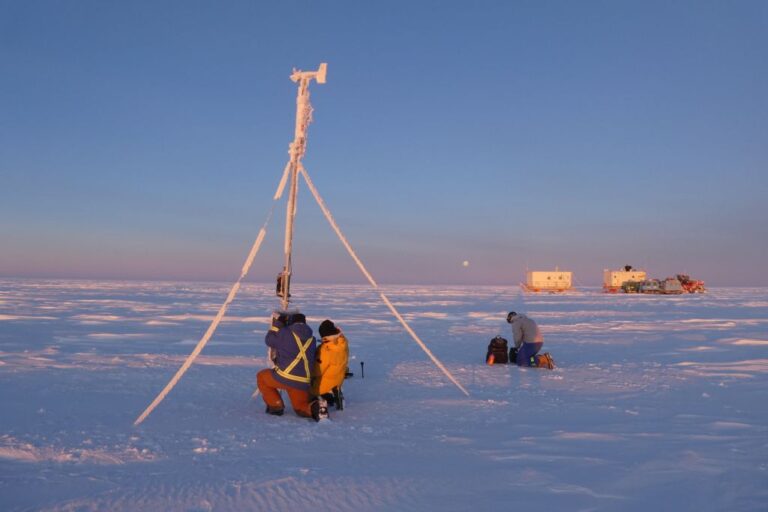Expeditioners from the Australian Government Department of the Environment and Energy’s Antarctic Division have travelled to one of the snowiest places in Antarctica to defrost a remote weather station.
It took a team from Casey research station, one of Australia’s three permanent research stations in Antarctica, four days for a round trip to the summit of Law Dome to assess the state of the automatic weather station there.
One of the eight-person team was Craig Butsch, a senior observer with the Bureau of Meteorology. Butsch said that Law Dome is basically a very flat rounded mountain with a perfectly circular base. “Imagine the top quarter of a basketball that’s nearly 5,000ft above sea level and Casey research station is at the bottom of it,” he said. “There’s nothing to see on the 120km drive, not even a rock. It’s just a gentle slope all the way to the top with white as far as the eye can see in all directions.”
The ten-hour journey involved two Hägglund vehicles and a large tracked tractor towing two shipping containers on sleds. One shipping container was used as a kitchen and sleeping area, the other a generator shed and toilet.
The group arrived at Law Dome on a full moon night. There was no wind and it was -25°C. Butsch went outside to take photos. “Usually when I’m outside at night in extreme cold, I call it a night when my fingers start to hurt, but this night I could have stayed out all night,” he said. “The reason I had to quit after just an hour was because my camera lens kept freezing up.”
The next morning was “spectacular, still no cloud, completely calm winds again, the sun was rising and the full moon was about to set.” It was time to check the automatic weather station (AWS), which is basically a propeller and wind vane on a pole with a solar panel and batteries. “The entire AWS had a 1in thick layer of frost all over it, even the guy ropes which were only a couple of millimeters thick,” Butsch added.
Frost in Antarctica is not as common as you might think. “For frost to form we really need high levels of moisture in the air and the air down here is really dry, and you need calm conditions as well.
“The sparkies knocked the mast with a shifter, and most of the frost fell off and the anemometer cups began to spin again. We also raised the solar panels, checked the battery voltage and replaced a missing guy wire.”
It was on the trip home that the weather really turned, according to Butsch. “The blizzard went for 40 hours, so day three of our traverse was very relaxing. We sat in the accommodation shipping container watching movies, eating, drinking and melting snow for water while the wind howled around us.”
“This particular blizzard had winds that sat between 85km/hr and 100km/hr for most of the time, which isn’t particularly ferocious, but there was a lot of loose, dry powder snow on the ground so the wind picked it all up and reduced the visibility quite significantly.”
During a blizzard a pile of compacted snow called a ‘blizz tail’ forms behind any solid object. The spinning eddies of turbulent air mould the snow into huge mounds. In the middle of the night the team discovered the tractor was being buried.
“Over a three hour period we all took it in turns digging the tractor out of compacted snow. We were only able to see the couple of meters in front of us where the head torch illuminated, until our goggles froze over. We eventually got it out. That was one of the more extreme things I’ve ever done.”
But the blizzard caused more problems than they initially thought. “The talcum powder-like particles of snow (called blizz) had been forced through the rubber door seals of the Hägglunds and deposited a layer of snow over everything inside.
“The engine compartments were worse, they were jam-packed full of compacted snow. This was the worst blizz inside a Hägglund I’d ever seen and this was my third winter,” said Butsch. “We had to scoop out the snow from within the engine compartments by hand. We couldn’t use tools because it would have been too easy to send a screwdriver though a radiator.”
The team arrived safely home after ‘de-blizzing’ the vehicles and enjoying a beautiful sunset over the ice.



